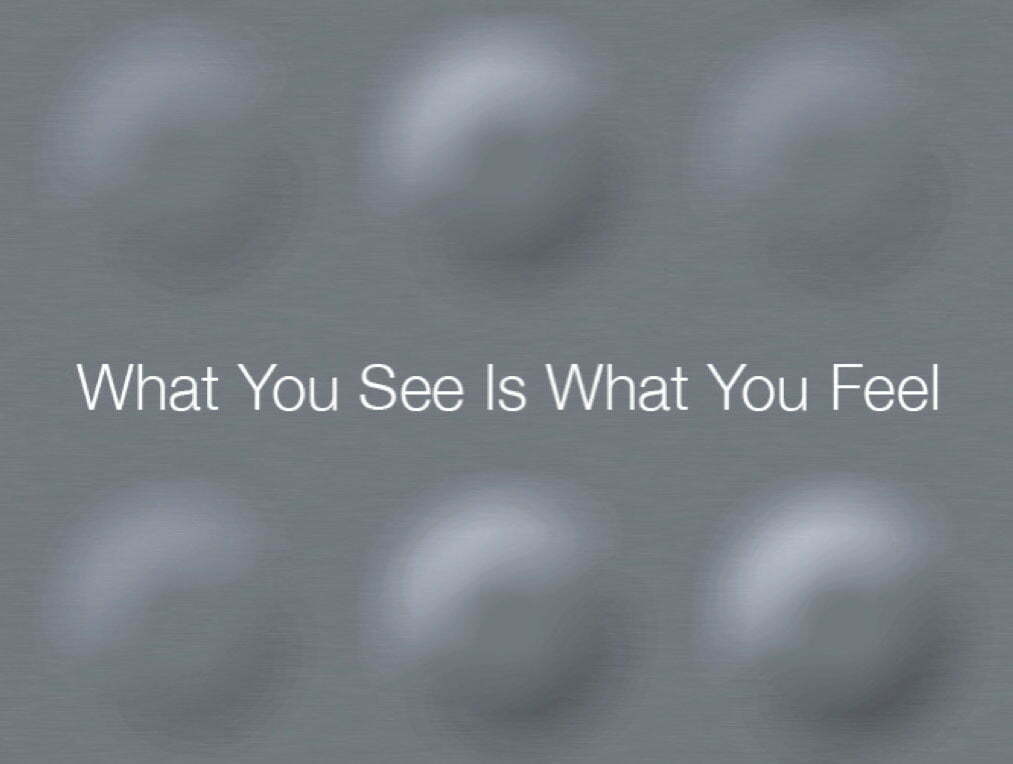What You See is What You Feel
Phd Thesis, 2009

What You See Is What You Feel explores the role of simulations in our society and presents a technique to simulate touch in visual interfaces.
With the introduction of the desktop metaphor, computers have become accessible for almost anyone; all over the world, people from various cultures use the same icons, folders, buttons and trash cans. From a sensorial point of view, however, this computing paradigm is still extremely limited. Inspired by renaissance painters – who centuries ago already applied various types of optical illusions in order to enhance the expressiveness of their paintings – we introduce a method of simulating touch with merely visual means. Interactive animations are used to create an optical illusion that evokes haptic percepts like stickiness, stiffness and mass, within a standard graphical user interface. This technique, called optically simulated hapic feedback, exploits the domination of the visual over the haptic modality and the human tendency to integrate between the various senses. Experiments show that the method can be a good alternative for mechanical force feedback devices. Furthermore, the study reflect upon the increasing role of media and simulations in our everyday lives.